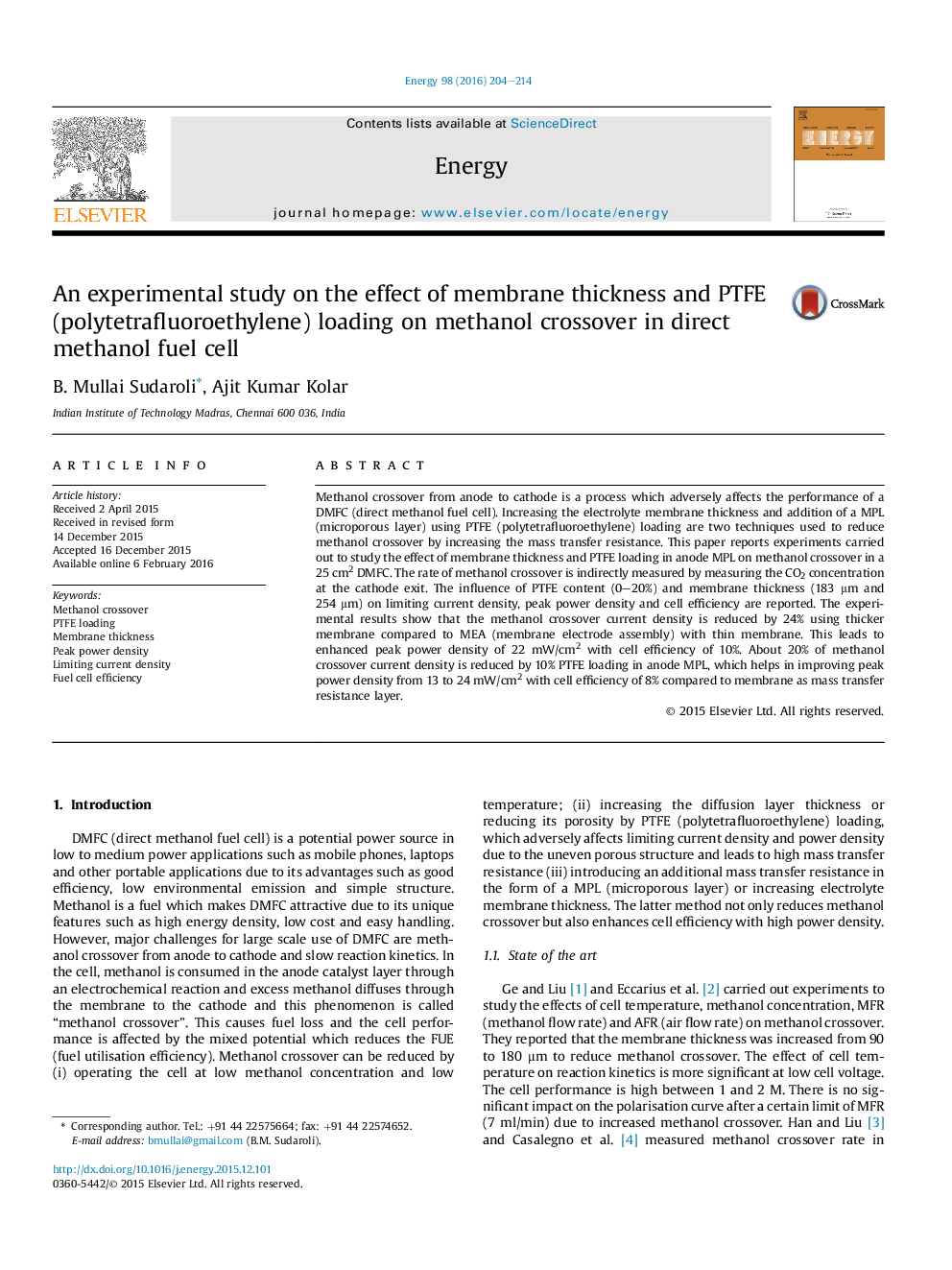| کد مقاله | کد نشریه | سال انتشار | مقاله انگلیسی | نسخه تمام متن |
|---|---|---|---|---|
| 1731371 | 1521450 | 2016 | 11 صفحه PDF | دانلود رایگان |

• Methanol crossover is measured for different Microporous Layer (MPL) and membranes.
• About 20% of methanol crossover is reduced by the cell with MPL.
• 10% improvement in peak power density of cell with MPL compared to thick membrane.
Methanol crossover from anode to cathode is a process which adversely affects the performance of a DMFC (direct methanol fuel cell). Increasing the electrolyte membrane thickness and addition of a MPL (microporous layer) using PTFE (polytetrafluoroethylene) loading are two techniques used to reduce methanol crossover by increasing the mass transfer resistance. This paper reports experiments carried out to study the effect of membrane thickness and PTFE loading in anode MPL on methanol crossover in a 25 cm2 DMFC. The rate of methanol crossover is indirectly measured by measuring the CO2 concentration at the cathode exit. The influence of PTFE content (0–20%) and membrane thickness (183 μm and 254 μm) on limiting current density, peak power density and cell efficiency are reported. The experimental results show that the methanol crossover current density is reduced by 24% using thicker membrane compared to MEA (membrane electrode assembly) with thin membrane. This leads to enhanced peak power density of 22 mW/cm2 with cell efficiency of 10%. About 20% of methanol crossover current density is reduced by 10% PTFE loading in anode MPL, which helps in improving peak power density from 13 to 24 mW/cm2 with cell efficiency of 8% compared to membrane as mass transfer resistance layer.
Journal: Energy - Volume 98, 1 March 2016, Pages 204–214